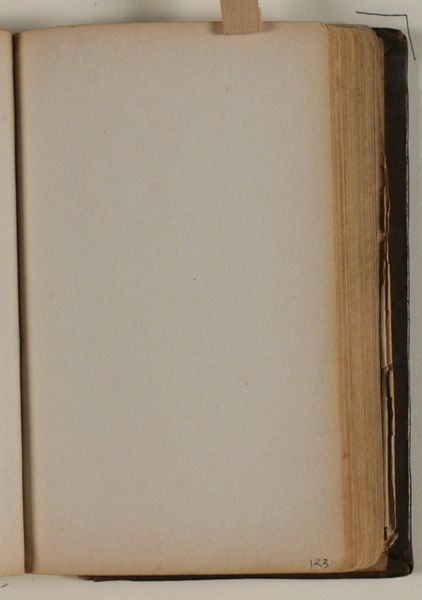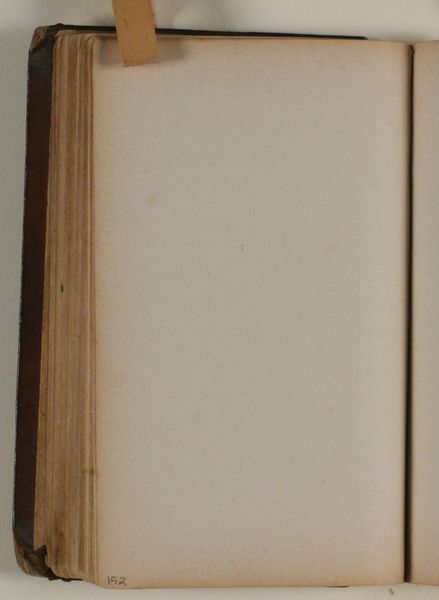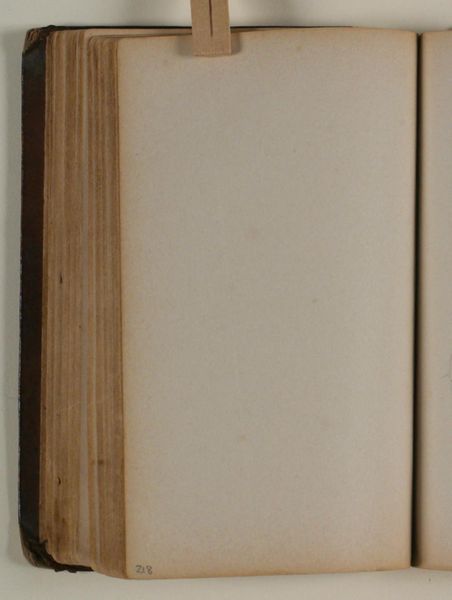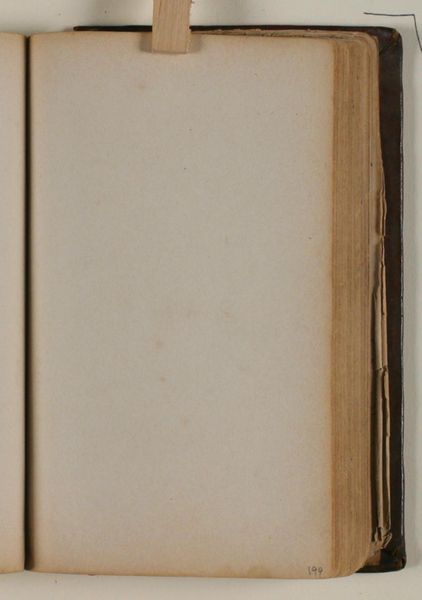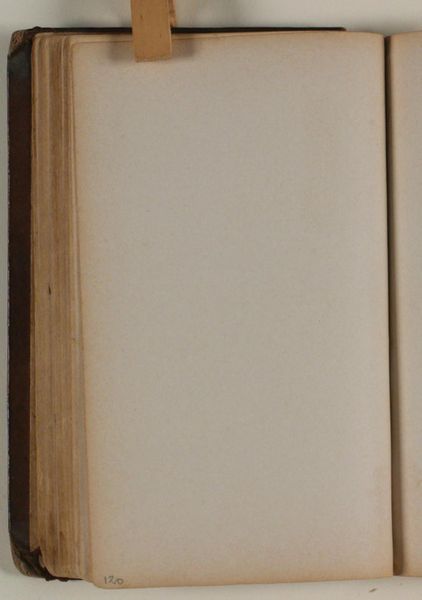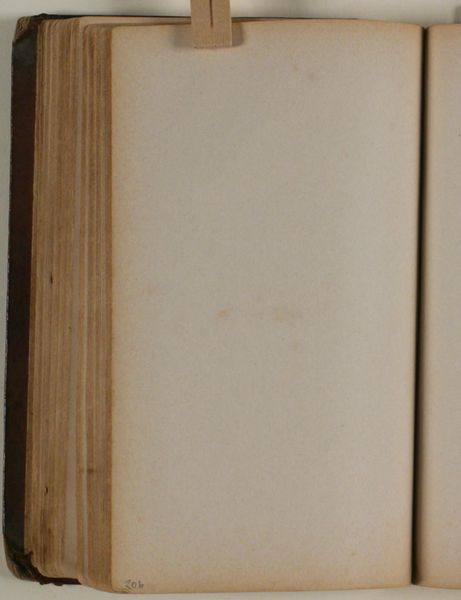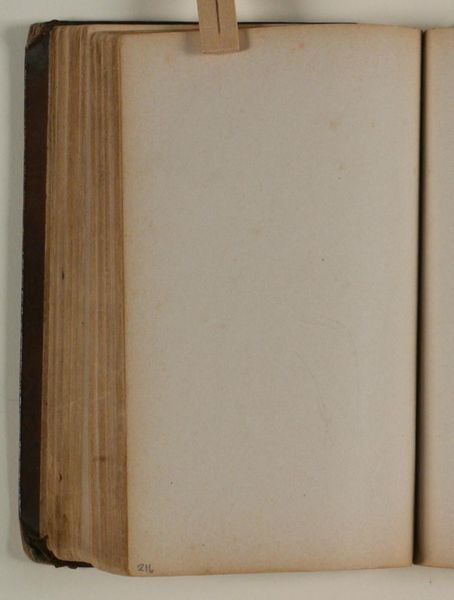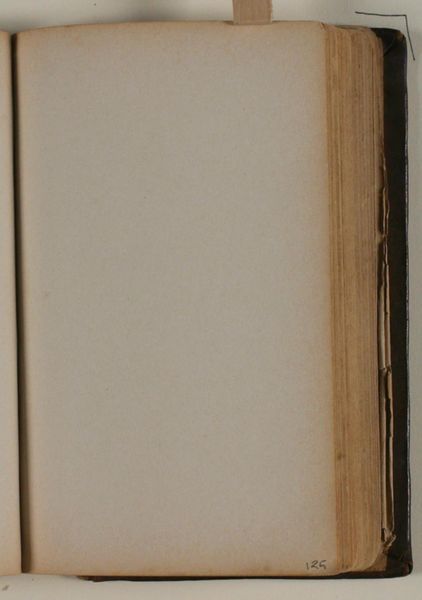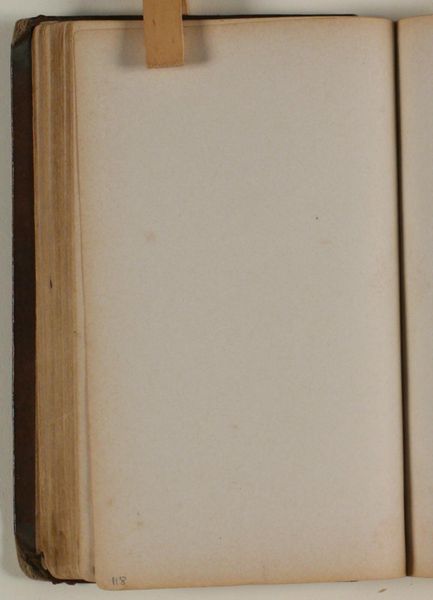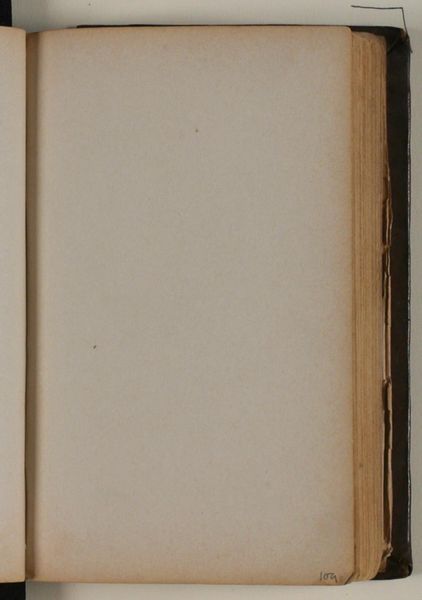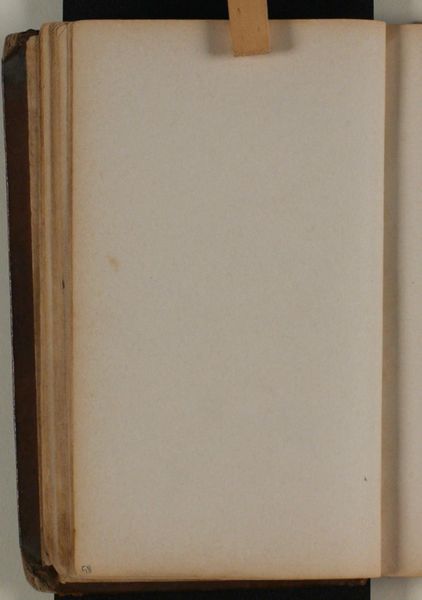
drawing, paper
#
drawing
#
paper
#
coloured pencil
Editor: This drawing, titled "Blank," is attributed to Niels Larsen Stevns and believed to have been created sometime between 1864 and 1941. It seems to be colored pencil on paper. At first glance, it's remarkably simple – an open book, yet undeniably captivating. What do you see in this piece, focusing on its formal elements? Curator: The most striking formal quality is, of course, the emptiness itself. The bilateral symmetry established by the book’s open pages draws our eyes to the implied central axis, which serves to further highlight the starkness of the blank canvas. Note how the artist masterfully utilizes light and shadow to accentuate the texture of the paper. The absence of ink becomes a presence in and of itself, an assertion of potential yet unfulfilled. Do you perceive any inherent tension arising from this paradox? Editor: I do. There's a tension between the expectation of content and the reality of emptiness. The materiality of the aged paper itself – its tone and texture – contribute to this feeling. But is that all there is? Curator: Not entirely. The materiality possesses a narrative, subtly enhanced by the presence of the book's binding. A sense of expectation is introduced: What untold stories lie within the blankness, which functions, formally, like a picture plane? It's a structure of possibilities, would you not agree? Editor: I see what you mean. The blankness isn’t just a void; it’s a field of potential. The spine and aged paper provide structural framing that demands the "page" to be filled. Curator: Precisely. And how the very structural composition—the framing of blankness by a defined structure—allows viewers to think. It asks us to supply content based only upon formal framework. Editor: Thinking about the piece this way, it certainly shifts my understanding of what constitutes “art.” I was caught up on looking for content, rather than the absence thereof creating meaning through structure. Thank you for making this new point understandable.
Comments
No comments
Be the first to comment and join the conversation on the ultimate creative platform.

